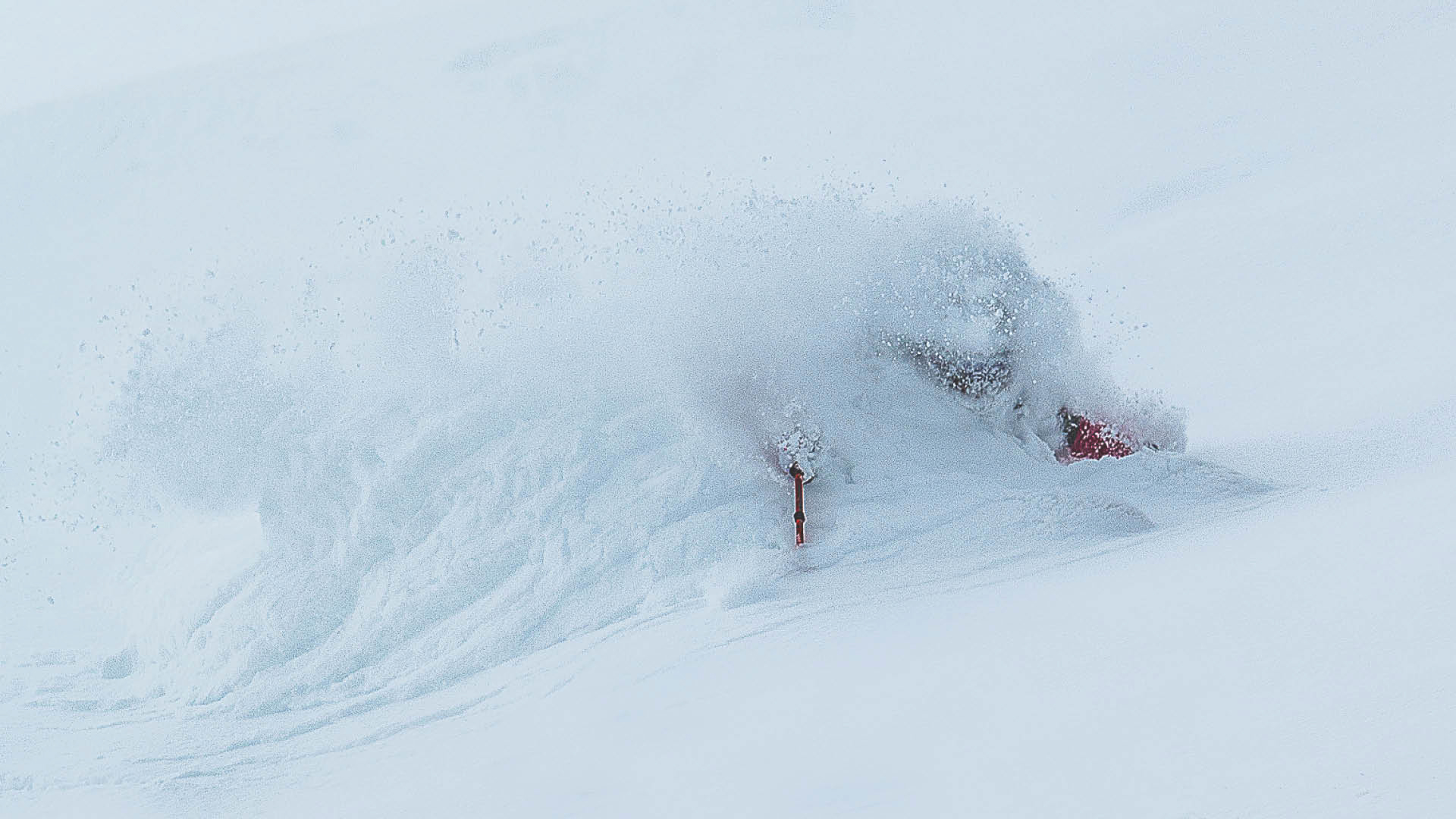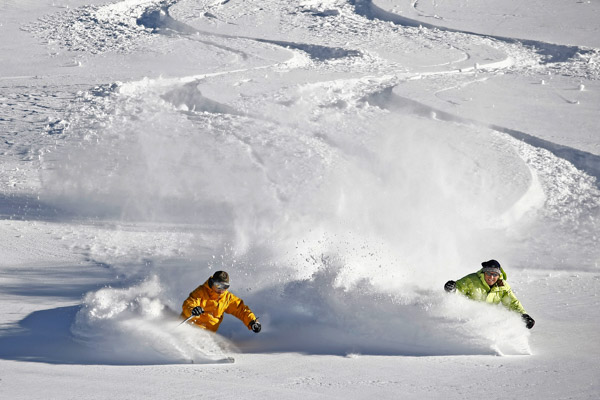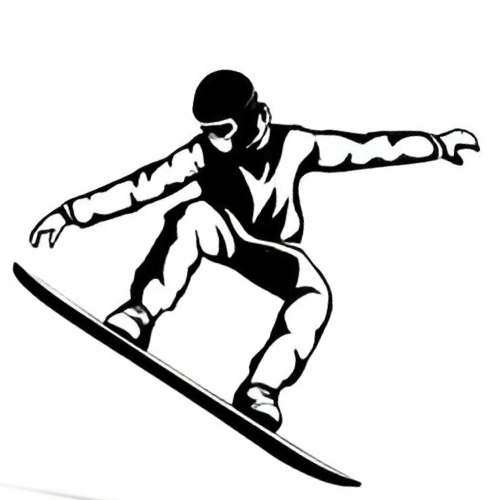To ski in deep powder, maintain a balanced stance and keep your skis close together. Use smooth, rounded turns and lean slightly back to keep the tips up.
Skiing through deep powder can be an exhilarating experience that transforms the mountain into a playground for adventurers. With fresh snow beneath your feet, the sensation is often described as floating—completely different from carving on groomed slopes. Mastering the art of deep snow skiing requires a blend of technique, confidence, and the right equipment.
From choosing wider skis designed for powder to adjusting your posture for optimal control, each element plays a crucial role in enhancing your deep powder experience. Embrace the challenges of deep snow skiing as you prepare to embark on a snowy adventure that promises excitement with every turn. Ready to float through the fluff? Let’s dive into the snow-covered thrills that await.
Gearing Up For Powder Skiing
When the mountain calls with its blanket of fresh snow, it’s time to get ready for an epic day of powder skiing. Before setting foot on the slopes, having the right gear is crucial to maximize fun and safety. Let’s break down the essentials for gliding through the deep, fluffy snow.
Choosing The Right Skis
Wide skis are your best friend in deep powder.
- Width: Look for skis with a waist width of at least 100mm.
- Length: Taller than your height ensures better float.
- Rocker: A ski with rocker technology rises at the tip and tail, aiding in float.
Importance Of Appropriate Boots
Comfort and control stem from having the right boots.
- Fit: Boots should be snug but not tight, with room to wiggle toes.
- Flex: A balance of stiffness provides support and maneuverability.
- Walk Mode: Some boots have a switch to making walking easier.
Essential Safety Equipment
Powder skiing brings risk; safety equipment is non-negotiable.
| Equipment | Purpose |
|---|---|
| Avalanche Transceiver | Locates buried skiers after an avalanche. |
| Shovel | Used for digging out snow in rescue efforts. |
| Probe | Helps to pinpoint the exact location of a buried person. |
| Helmet | Protects your head during falls and collisions. |
| Airbag Pack | Increases chances of staying on the surface during an avalanche. |
Remember, always check avalanche reports before heading out and consider taking an avalanche safety course to prepare for emergencies.

Credit: powdercanada.com
Understanding Powder Snow
The allure of deep powder snow is undeniable. It’s the soft, fluffy, and lightweight snow that most skiers dream of conquering. Unlike the dense, compact snow on groomed trails, deep powder offers a unique experience that feels like floating on clouds. The key to mastering this snowy terrain lies in knowing its characteristics and how it differs from packed snow. Let’s dive into the wonders of deep powder!
Characteristics Of Deep Powder
Deep powder snow feels smooth and cloud-like. Its key features include:
- Freshness: It’s newly fallen snow, not yet compressed.
- Consistency: Deep powder is remarkably consistent in texture.
- Depth: True powder is several inches deep at least.
- Responsiveness: It reacts differently to swift movements compared to harder packed snow, requiring distinct skiing techniques.
How Powder Differs From Packed Snow
Understanding the contrast between powder and packed snow is essential. Notice the striking differences:
| Powder Snow | Packed Snow |
|---|---|
| Light and airy | Dense and hard |
| Requires a wider stance for balance | Allows for a narrow, more traditional stance |
| Skis often sink, creating resistance | Skis glide on the surface, offering less resistance |
| Can cause skiers to lean back more | Encourages forward-leaning posture |
The table showcases how significantly different these two types of snow can be. Skiers need to adapt their skills accordingly to enjoy and safely navigate through deep powder.
Mastering The Basics
Skiing in deep powder is an exhilarating experience that challenges your skills. Before diving into the fluffy white, understanding the fundamentals is crucial. Powder skiing is different from groomed-trail skiing. Mastering the basics sets the stage for a smoother, more enjoyable powder day. Let’s get you ready to float through powder with confidence.
Proper Stance And Balance
A well-balanced stance is your secret weapon on deep snow. Keep your feet shoulder-width apart. This position gives you stability. Slightly lean forward. Place your weight on the balls of your feet. This helps with quick movements. Aim to keep your body centered over your skis at all times.
- Flex your ankles – this lets you absorb bumps with ease.
- Bend your knees – a soft, athletic stance improves your balance.
- Stay nimble – ready for unexpected changes in terrain or snow depth.
Balance techniques change with the snowpack. In lighter powder, your balance can be more centered. In heavier snow, shift your weight back slightly to keep your tips up. Experiment to find your sweet spot on different powder days.
Efficient Turning Techniques
To turn in powder, use the whole body, not just the legs. Remember, everything is smoother in deep powder. Start your turn by looking where you want to go. Gently dip your shoulder down towards the turn. Roll your knees and feet into the turn. Keep your weight consistent between both skis to avoid sinking.
- Initiate turns with a gentle motion.
- Maintain a steady rhythm – don’t rush.
- Let the skis’ buoyancy help you surface before turning again.
Turning in powder can feel like a dance. Stay patient and allow the skis to do the work. Don’t force the turn. Use the snow to slow you down, not just your edges. This technique keeps your energy up for a day full of powder runs. Remember, practice makes perfect. The more you ski, the better your powder turns will become.

Credit: www.section8ski.com
Advanced Skiing Techniques
Welcome to the thrilling world of deep powder skiing, where the snow is fresh and the adventures are limitless. Advanced skiing techniques are essential for those ready to leave a mark on the untouched canvas of deep powder. Here we look at the finer points of powder skiing. Whether you’re an expert looking to refine your skills, or an intermediate skier ready for the next challenge, these techniques will elevate your deep powder experience.
Maintaining Momentum
Keeping your speed in deep powder is key. Momentum is your friend. It helps you stay on top of the snow. Light, consistent turns are better than sharp, aggressive ones. Always keep your body moving down the hill.
- Stay balanced: Keep your weight evenly distributed over both skis.
- Smooth transitions: Roll your knees and angle your skis to turn without sudden movements.
- Use poles: Plant them firmly for support and rhythm.
Navigating Steep Terrain
Steep slopes in deep powder are both exhilarating and demanding. Your confidence and skill must rise to the challenge. Remember to:
- Keep your body leaning downhill. Let gravity guide you.
- Favor short, quick turns for control. This helps you adjust to the mountain’s shape.
- Look ahead and plan your path. Anticipate changes in the terrain.
By mastering these advanced techniques, you’ll enhance your powder skiing adventures.
Body Movement And Control
Mastering deep powder skiing unlocks a world of excitement on the slopes. Body movement and control are keys to smooth runs through soft snow. Lean in to learn how to float like a pro.
Weight Distribution For Soft Snow
Skiing on powder differs from packed snow. Your weight distribution is crucial. Keep these points in mind:
- Stay centered: Keep your weight even on both skis.
- Flex your ankles: It helps balance in deep snow.
- Lean forward: Aim to press the ski tips down slightly.
Avoid leaning back. It might seem like the right move, but it can tire you out. Stay centered for the best control.
Using Pole Plants Effectively
Poles are more than balance sticks. They guide your turns. Here’s how to use them in powder:
- Plant your pole downhill of your turn.
- Time it with your turn initiation.
- Use it to pull yourself forward and around.
Effective pole use maintains rhythm. It also helps in stabilizing your body.
Adapting To Skiing In Trees
Gliding through deep powder is exhilarating, but Adapting to Skiing in Trees adds a twist to your winter adventure. Trees can be your playground, as long as you embrace the art of maneuvering among them.
Spatial Awareness
Staying alert is vital among trees. Your eyes must lead, scanning for gaps to slip through. Heighten your senses; feel the space around each trunk. Proceed with these tips:
- Keep your gaze up and look ahead, not down.
- Notice patterns in the tree spacing to anticipate your line.
- Use peripheral vision to avoid close obstacles.
- Adjust your stance for better balance and reaction.
Quick Decision Making
In the thick of the woods, time is scarce. Quick choices keep you safe and joyful. Here’s how you can improve:
- Trust your instincts; overthinking leads to mistakes.
- Stay calm to think clearly and act swiftly.
- Practice in less dense tree areas to build confidence.
- Memorize escape routes for unexpected situations.
Skiing in trees offers an unmatched thrill. Respect the forest’s challenges, and you’ll reap its rewards. Enjoy the ride, embrace the powder, and keep these pointers in mind to master the woods.
Coping With Varying Powder Conditions
Mastering deep powder skiing is an exhilarating challenge. Yet, the unpredictable nature of powder can turn your ski adventure into a true test of skill. Differing powder conditions require specific techniques for a smooth ride down the slopes. Let’s dive into how to manage these variations effectively.
Handling Crud And Crust
- Stay Relaxed: Keep your body loose to absorb shifts in the terrain.
- Weight Distribution: Balance your weight evenly on both skis.
- Powerful Turns: Use strong, decisive movements to navigate crud.
- Sharpen Your Edges: Well-maintained ski edges offer better control.
Crud and crust layers form when fresh snow compacts or partially melts, creating uneven surfaces. These conditions demand attentiveness and adaptability. Maintain a centered stance and utilize short, quick turns for better management of unpredictable snowpacks. Flexibility in your knees and ankles allows for rapid adjustments.
Tactics For Skiing In Fresh Tracks
- Pole Plant: Use your poles for rhythm and balance.
- Lean Forward: Keep your center of gravity over your skis.
- Breath Control: Sync your breathing with your movements.
- Avoid Over-Turning: Minimize turn angles to maintain speed.
Fresh tracks mean untouched powder, which offers a unique thrill. Initiate each turn with purpose, directing your skis through the snow with precision. Keeping a smooth, flowing motion helps conserve energy. Embrace the powder’s resistance and let it guide your speed and turn shape.
Timely pole planting can serve as a valuable reference point for stability in deep snow. Coupled with a forward-leaning posture, it ensures your skis stay on course. Manage your breathing to sustain energy, and avoid tight turns that can cause sinking. Instead, aim for wide, sweeping movements to keep momentum.
| Condition | Challenge | Strategy |
|---|---|---|
| Crud | Uneven Surface | Decisive Turns |
| Crust | Breakable Top Layer | Even Weight |
| Fresh Tracks | Resistance | Wide Turns |
Whether facing crusty challenges or carving fresh lines, adaptability is key. Keep these tips in mind, and you’re sure to enjoy the powder-filled descent!
Safety And Avalanche Awareness
Safety and Avalanche Awareness are critical when skiing in deep powder. The joy of cutting through fresh snow can quickly turn dire without proper knowledge. Every skier must recognize potential dangers and prepare for unexpected turns. Let’s delve into how you can keep safe and enjoy the mountain responsibly.
Recognizing Hazardous Areas
Identifying risky regions on a slope is vital for safety. Bold lines indicate steep, unstable terrain. They often lead to potential avalanche hotspots. Look for signs: recent avalanches, wind-loaded pockets, and hollow sounds underfoot. Layers of snow with different hardness also signal instability.
| Type of Hazard | Description | Warning Sign |
|---|---|---|
| Wind-loaded slopes | Slopes with snow deposited by wind | Smooth, rounded areas on crests |
| Recent avalanches | Snow slides that occurred recently | Fresh debris and disturbed snow |
| Cornices | Overhanging edge of snow on a ridge | Large mass of snow protruding over a ridge |
Preparation And Response To Avalanches
A skier must always be ready for an avalanche. Before hitting the slopes:
- Take an avalanche safety course.
- Carry essential gear: a beacon, probe, and shovel.
- Check daily avalanche reports and weather forecasts.
In an emergency, your response time is crucial. Ensure your group knows the escape plan. If caught in an avalanche:
- Stay calm and attempt to move to the side.
- Use swimming motions to stay near the surface.
- Once stopped, create an air pocket and try to push a hand above the snow.
Familiarity with your safety equipment saves lives. Practice regularly with your gear to ensure quick and efficient use during real situations. Together, we can enjoy the exhilarating experience of deep powder skiing without compromising on safety.
Learning From The Pros
Learning from the Pros unlocks the mystical world of deep powder skiing. Elite skiers glide effortlessly through snowy blankets. Their secrets? A blend of skill, technique, and practice. Absorb their wisdom, and dancing on deep powder becomes second nature.
Tips From Experienced Powder Skiers
- Stance Matters: Keep your feet shoulder-width apart. Balance is key.
- Weight Distribution: Lean back slightly. Let your tips rise.
- Pole Use: Plant poles firmly. They guide and stabilize you.
- Look Ahead: Focus on your path. Your skis will follow your eyes.
- Rhythm is Your Friend: Make smooth, rounded turns. Flow with the terrain.
Taking A Powder Skiing Lesson
Nothing beats real-time feedback from a seasoned instructor.
| Benefits |
|---|
| Personalized guidance |
| Technique correction on the spot |
| Learning local snow conditions |
| Boosted confidence |
Enroll in a class. Practice with professionals. Their expertise transforms your experience.
Maximizing Your Powder Day
Are you ready to make the most of a snowy mountain adventure? Skiing in deep powder is a thrilling experience. It requires skill, but also strategy. To help you get the best out of your day on the slopes, let’s dive into some tactics for maximizing your powder day.
Finding The Best Powder Stashes
Secret spots with untouched powder are every skier’s dream. Early birds catch the fresh fluff. Wake up early. Head for the highest peaks. Ski near trees for wind-sheltered snow.
- Check the weather forecast the night before.
- Follow locals’ tracks, they know the mountain.
- Scope out the terrain on the ski lift up.
Talk to ski patrollers. They have the best mountain insights. Remember, safety first. Stay within the resort boundaries unless with a guide.
Conserving Energy For Long Days
A full day of powder skiing can be exhausting. Use these tips to stay energized:
| Tip | Benefit |
|---|---|
| Maintain a balanced stance | Reduces leg fatigue |
| Use wide, short skis | Increase float and efficiency |
| Keep a smooth rhythm | Conserves energy |
| Stay hydrated and fueled | Keeps energy levels high |
Take frequent breaks. Rest before you are tired. Stretch in the morning. These help to keep you on the slopes longer.

Credit: canadianadventurecompany.com
FAQ
Is It More Difficult To Ski In Powder?
Skiing in powder can be challenging for beginners, requiring different techniques than on groomed trails. Mastery often demands practice and skill adaptation.
Do You Lean Back When Skiing In Powder?
No, do not lean back when skiing in powder. Maintain a balanced stance with weight centered over your skis to ensure control and maneuverability.
How Do You Ski Crud Powder?
To ski crud powder, maintain a balanced, centered stance. Keep your skis close together and use strong, decisive turns. Stay relaxed, agile, and let your skis roll from edge to edge, adapting swiftly to variable snow conditions. Focus on smooth, rhythmic movements to navigate effectively.
How Do You Ski Powder Without Sinking?
Lean slightly back to distribute your weight and keep your tips up. Make wide, sweeping turns. Stay light on your feet, and maintain a rhythm. Keep your speed to help with floatation. Use powder skis for better lift.
Conclusion
Embracing the thrill of deep powder skiing transforms every slope into a playground. Mastering the float and glide requires practice, but the payoff is immense. Remember the tips shared here, from body positioning to gear selection, and you’re set for an unforgettable ride.
Slide into the white room with confidence; fresh tracks await!
